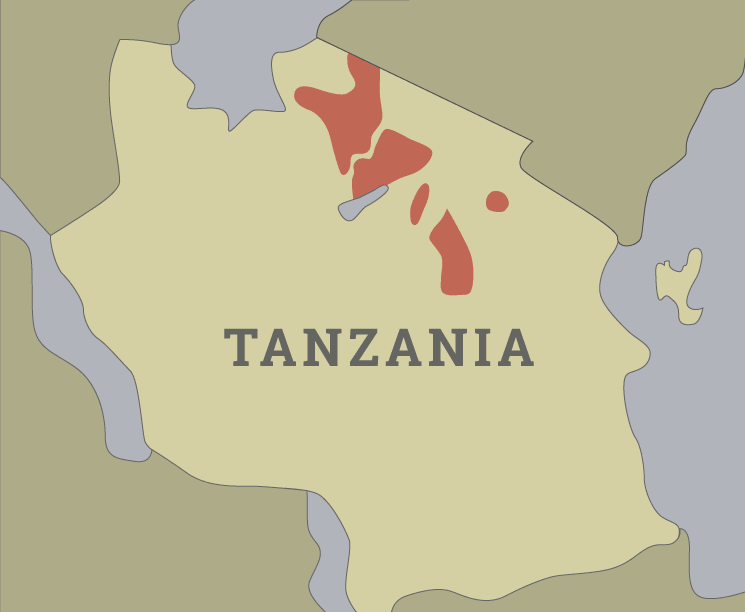May - Northward Migration
May heralds the beginning of the dry season in Tanzania and the start of the northward migration season. Dry conditions prevail and the occasional afternoon or evening thundershower is a welcome relief. Wildlife viewing can be tremendous in May when the migration is on the move and the great herds pour through the Central and Westerns regions of the Serengeti. With pleasant temperatures and extraordinary wildlife viewing, May is one of the most popular months in Tanzania for a safari.
May heralds the end of the wet season, which lasts from about the beginning of November to mid May. By mid May, the weather generally begins to clear and all the parks begin their season of change. There is a chance of heavy rain in the beginning of May and lighter showers can be expected for a few hours every other day during the remainder of May. However, when it does rain, it will usually clear in 1-2 hours and more then likely the rain will be localized. It is rare that rain clouds will settle over a large area for an extended period of time. May is the end of the season of the so-called 'long rains', which simply does not mean much of anything in the Serengeti and is more applicable to other areas in East Area. There is a risk that the heavier rains will pose an inconvenience on game drives especially during the beginning of May. This risk is mitigated by the fact that it tends to rain less on the Serengeti plains where the best wildlife viewing is located during May. Additionally, we believe the month of May offers superb game viewing opportunities. We strongly recommend longer duration safaris during the beginning May. We view the extra night or two as insurance against the potential of sour weather having a negative impact on any one day.Rain falls in different amounts over various locations throughout Northern Tanzania. The Ngorongoro Crater, Tarangire and Lake Manyara receive higher rainfall then many parts of the Serengeti. There is a steep rainfall gradient in the Serengeti from the dry southeast to the wet northwest. The winds that bring rain blow from the east. The Ngorongoro Highlands block much of the rain from reaching the eastern and southern plains of the Serengeti. However, the western and northern parts of the Serengeti receive a much greater amount (2-3 times more) of participation as compared to the southern and eastern Serengeti. The wetter western and northern Serengeti areas are affected by Lake Victoria. This means that in the southern Serengeti where you should ideally focus your May safari, the rains should not be an issue and it will rain substantially less then the other areas of the Serengeti and Tanzania.
Temperatures are pleasant with an average high of 81 degrees and an average low of 56 degrees. However, the rim of the Ngorongoro Crater can get quite cold at night and in the early morning. Visitor numbers drop off dramatically at the beginning of March and during April and May the parks are completely empty of tourists. April and May see the fewest visitors of any month and lodging costs are substantially reduced. There is hardly anyone around in the parks, wildlife concentrations are at their highest in the Southern Serengeti, and the landscape is a lush green. May is one of our favorite times to take a safari!














